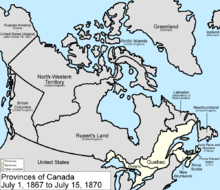Section 147 of the Constitution Act, 1867
[6] Section 147 reads: As to Representation of Newfoundland and Prince Edward Island in the Senate147 In case of the Admission of Newfoundland and Prince Edward Island, or either of them, each shall be entitled to a Representation in the Senate of Canada of Four Members, and (notwithstanding anything in this Act) in case of the Admission of Newfoundland the normal Number of Senators shall be Seventy-six and their maximum Number shall be Eighty-two ; but Prince Edward Island when admitted shall be deemed to be comprised in the third of the Three Divisions into which Canada is, in relation to the Constitution of the Senate, divided by this Act, and accordingly, after the Admission of Prince Edward Island, whether Newfoundland is admitted or, not, the Representation of Nova Scotia and New Brunswick in the Senate shall, as Vacancies occur, be reduced from Twelve to Ten Members respectively, and the Representation of each of those Provinces shall not be increased at any Time beyond Ten, except under the Provisions of this Act for the Appointment of Three or Six additional Senators under the Direction of the Queen.
[7]Section 147 is found in Part XI of the Constitution Act, 1867, dealing with the admission of other colonies.
There was some hope that the other two eastern British North American provinces, Newfoundland and Prince Edward Island, would join in the future.
They included a mechanism in the Constitution Act, 1867 for Prince Edward Island and Newfoundland to join Confederation in the future (section 146).
The Maritime division was originally envisaged as containing New Brunswick, Nova Scotia and Prince Edward Island.
[12][13] At the London Conference, the delegates decided that the Maritime contingent would initially be divided evenly between New Brunswick and Nova Scotia, with each receiving twelve senators.
Section 146 of the Act provides for the admission of Newfoundland and Prince Edward to Confederation.

